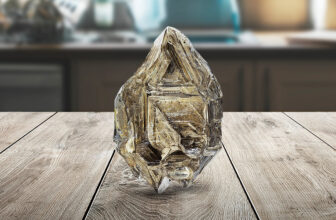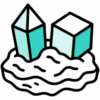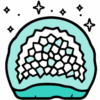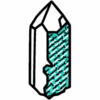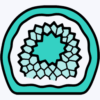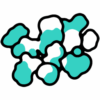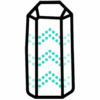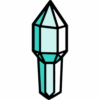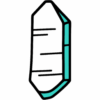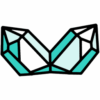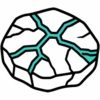Etched Crystals
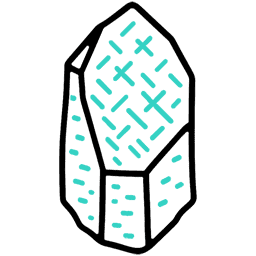 Messages Carved by Time
Messages Carved by Time
Some crystals don’t just shine – they speak. Their surfaces are marked with mysterious lines and symbols, as if Earth herself took up a chisel and began to write. These are Etched Crystals, the storytellers of the mineral world, where beauty and chemistry intertwine in an elegant script of time.
Have you ever held a crystal whose markings seemed too deliberate, too precise, to be random? That’s the intrigue of etched formations. Each groove and swirl is a relic of the crystal’s past – shaped by shifting temperatures, mineral-rich waters, and subtle chemical reactions that leave their trace like ancient calligraphy.
Etched crystals often appear as though nature encoded them with messages. Some surfaces shimmer with maze-like glyphs; others seem to bear alien maps or faint hieroglyphs. To a geologist, these are the results of selective chemical corrosion. To a mystic, they are energy signatures – the Earth’s secret language made visible.
Nature’s Subtle Engravings
How do these intricate markings come to be? The process is far gentler and more complex than one might imagine. Etched crystals begin their lives just like any other – forming steadily within the Earth under stable conditions of heat and pressure. Then, something changes.
Perhaps a shift in temperature stirs the environment. Perhaps acidic hydrothermal fluids sweep through the chamber, brushing against the crystal’s surface. This new chemistry begins to dissolve microscopic layers of the mineral – but not uniformly. Certain planes resist erosion while others yield, and as this dance unfolds, patterns emerge.
Over time, these reactions create ridges, spirals, and geometric scars that mimic writing or hieroglyphs. Once the environmental conditions stabilize again, the etching stops – leaving behind what could be called a snapshot of molecular history.
From a scientific perspective, this process offers valuable clues. The etched surface of quartz, beryl, or fluorite can reveal details about the pH, temperature, and chemical composition of the environment during the crystal’s transformation. To a trained eye, the patterns are like geological fingerprints – each one pointing to a unique chapter in the stone’s formation story.
Identifying Etched Crystals
If you were to examine an etched crystal closely, what would you see? Imagine a surface alive with texture – a labyrinth of fine grooves, spirals, triangles, and ladder-like shapes that seem to shift as light passes over them. These markings can be shallow and silky, or deep and shadowed, depending on the mineral and the intensity of the etching process.
The most common host is quartz – especially clear, smoky, and amethyst varieties. Their markings can resemble runes or encoded symbols, as if inscribed by an ancient hand. Beryl (such as aquamarine and emerald) may display gentle flowing lines, while fluorite reveals sharp geometric hollows and steps. Calcite, on the other hand, wears its etchings softly, like wind-carved dunes.
Unlike man-made carvings, natural etchings flow with the rhythm of the crystal’s own geometry. Their depth varies subtly, their edges melt into growth faces rather than cutting across them. Under magnification, the etched zones align with the crystal’s internal lattice – proof that these markings are born from within, not imposed from without.
The Many Faces of Etching
Not all etched crystals are created equal. Some bear crisp geometric inscriptions, while others show delicate, misty frosting. The differences lie in what shaped them – the chemistry, the heat, and the passage of fluid through stone.
- Hydrothermal Etching: Occurs when acidic, mineral-rich fluids etch crystal faces deep underground. The result? Sharp, angular patterns that gleam like sacred scripts.
- Solution Etching: Happens in slower, surface-level environments, producing rounded, labyrinth-like textures that feel almost organic.
- Thermal Etching: Caused by intense heat and pressure changes that sculpt intricate, interlocking grooves.
From an artistic perspective, etched crystals are natural artworks, each formation carrying a different rhythm and tone. Some resemble maps or portals. Others mimic fractals, symbols, or flowing waves. And while science can explain the chemistry behind each variation, their aesthetic – that haunting sense of intelligence in pattern – remains a mystery that science doesn’t quite solve.
The Spiritual Voice of Etched Crystals
What if those markings weren’t random at all? In the metaphysical world, etched crystals are seen as keepers of ancient wisdom – stones that store messages from deep within the Earth’s consciousness. Their surfaces are said to encode energy, light, and memory, accessible only through stillness and intuition.
Working with etched crystals in meditation often brings a sense of depth – as though the crystal itself holds a story waiting to unfold. Many believe they help unlock hidden knowledge, past-life insights, or ancestral memories. They remind us that the marks we carry – emotional, spiritual, or physical – can become part of our beauty and wisdom.
Different types of etched crystals carry unique energetic tones:
- Etched Quartz is often called the Wisdom Keeper, believed to store Akashic records – subtle imprints of universal knowledge.
- Etched Amethyst opens the intuitive channels, fostering divine communication and clarity.
- Etched Smoky Quartz grounds insight into practical understanding, merging spiritual knowing with lived experience.

